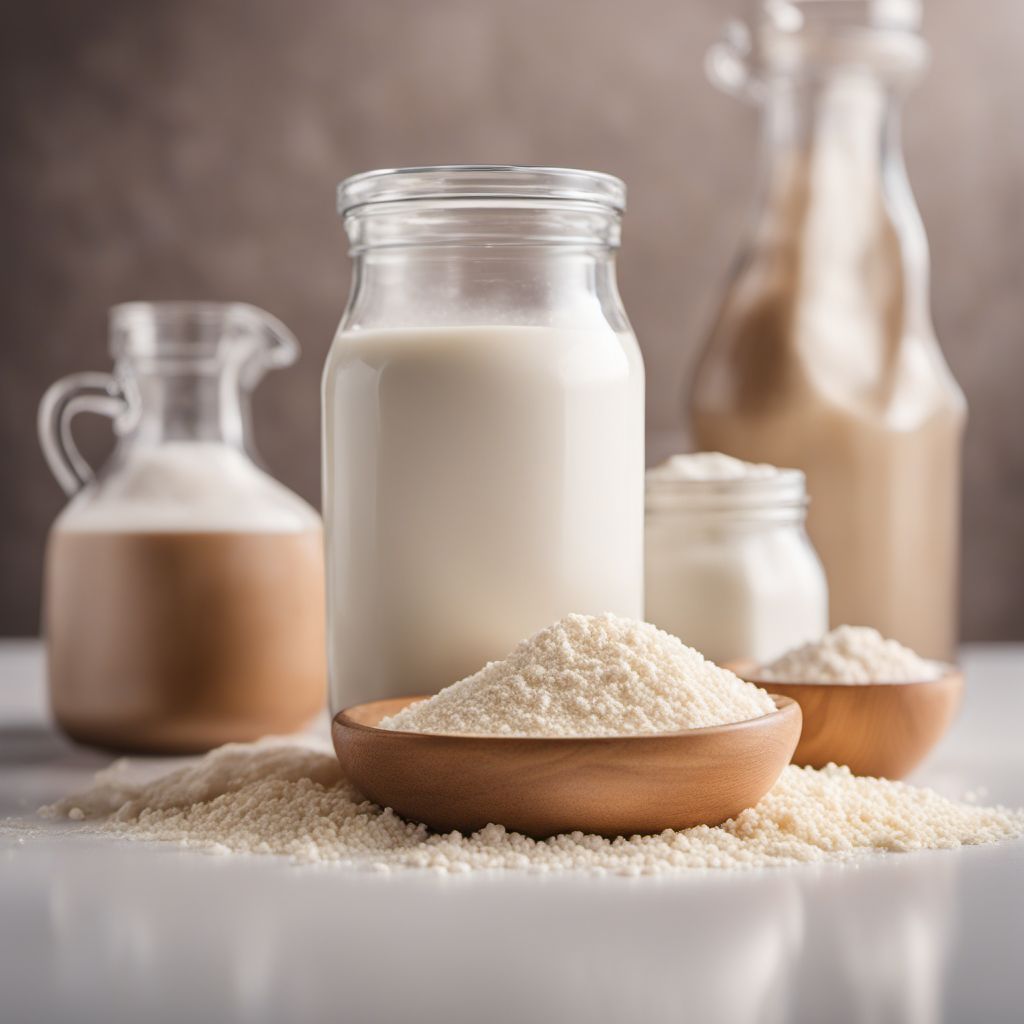
Ingredient
Milk and dairy powders and concentrates
The Creamy Essence of Culinary Excellence
Milk and dairy powders and concentrates are derived from fresh milk through various processes such as evaporation and drying. They come in different forms, including powdered milk, condensed milk, and evaporated milk. These products have a creamy texture and a distinct milky flavor that can range from mild to rich and indulgent. Milk powders are fine and powdery, while concentrates have a thicker consistency. When used in cooking, milk and dairy powders and concentrates contribute a creamy and smooth mouthfeel, enhancing the overall taste of dishes.
Origins and history
The use of milk and dairy products in cooking can be traced back to ancient times, where they were valued for their nutritional benefits and culinary versatility. Dairy products have been an integral part of various cuisines around the world, from European classics like French béchamel sauce to Indian desserts like kheer. Today, milk and dairy powders and concentrates are widely used in both traditional and modern recipes, providing a creamy and flavorful element to dishes.
Nutritional information
Milk and dairy powders and concentrates are excellent sources of essential nutrients such as calcium, protein, and vitamins. They provide a creamy and flavorful element to dishes while also contributing to their nutritional value. It is important to choose low-fat or non-fat options if you are watching your calorie intake or have dietary restrictions.
Allergens
Milk and dairy products, including powders and concentrates, may contain lactose and milk proteins, which can cause allergic reactions in individuals with lactose intolerance or milk allergies. It is important to read labels and check for any potential allergens before consuming or using these products in recipes.
How to select
When selecting milk and dairy powders and concentrates, look for reputable brands that offer high-quality products. Opt for products that are made from fresh milk and have undergone proper processing and packaging. Check the expiration date and ensure that the packaging is intact. Additionally, consider the specific recipe and desired consistency when choosing between milk powders and concentrates.
Storage recommendations
To maintain the freshness and quality of milk and dairy powders and concentrates, store them in a cool, dry place away from direct sunlight. Keep the packaging tightly sealed to prevent moisture absorption and contamination. Once opened, transfer the product to an airtight container and use it within the recommended time frame to ensure optimal flavor and quality.
How to produce
Producing milk and dairy powders and concentrates at home is not feasible for most individuals, as it requires specialized equipment and knowledge of dairy processing techniques. It is recommended to leave the production of these products to professional dairy manufacturers and focus on their culinary applications instead.
Preparation tips
When using milk and dairy powders and concentrates in recipes, it is important to follow the instructions provided on the packaging. These products can be reconstituted with water to achieve the desired consistency. They are commonly used in sauces, soups, and baked goods to add creaminess and flavor. In desserts, milk and dairy powders and concentrates are essential for creating creamy custards, puddings, and ice creams. They can also be used as a substitute for fresh milk in recipes that require a longer shelf life.
Culinary uses
Milk and dairy powders and concentrates are widely used in a variety of culinary applications. They are often used to create creamy sauces, such as béchamel or cheese sauce, for pasta dishes or gratins. In baking, these products are essential for achieving moist and tender cakes, cookies, and bread. They are also key ingredients in creamy desserts like custards, puddings, and ice creams. Additionally, milk and dairy powders and concentrates can be added to smoothies or milkshakes for a rich and creamy texture.
Availability
Milk and dairy powders and concentrates are commonly available in grocery stores, supermarkets, and specialty food stores worldwide. They are widely used in various cuisines and can be found in both traditional and modern recipes.

